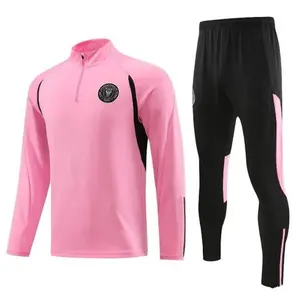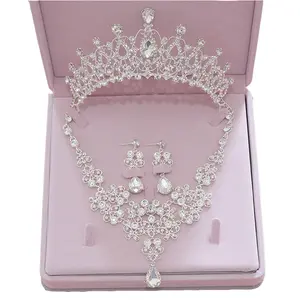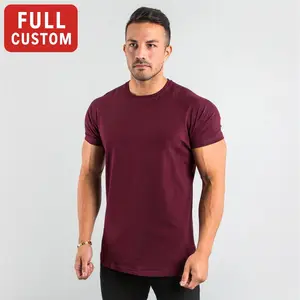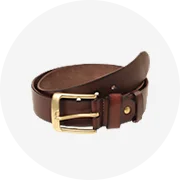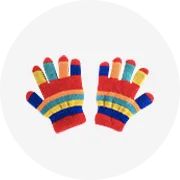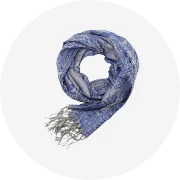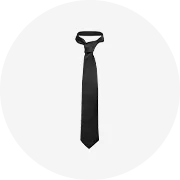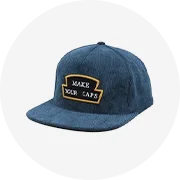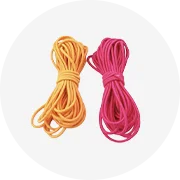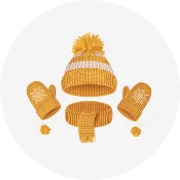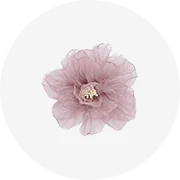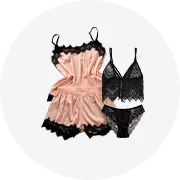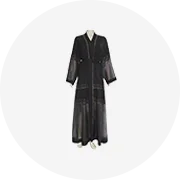Populer di industri Anda






Bra perawatan payudara anak perempuan, pakaian dalam musim panas nyaman untuk anak perempuan, pakaian dalam anak remaja, dan rompi latihan Musim Panas keren
Rp 4.065 - Rp 4.878
Minimal Pesanan: 5000 Buah







Produk bayi Kelas A Dipers pemasok popok Korea 50 buah celana tarik ke atas bantalan pengganti Harga anak-anak pelatihan Daier popok
Rp 976 - Rp 1.952
Minimal Pesanan: 2000 Buah







Kenyamanan Remaja: Bra perempuan tanpa cincin baja dan pengembangan pakaian dalam berulir-produsen penjualan langsung
Rp 8.130 - Rp 15.447
Minimal Pesanan: 2000 Buah







Produsen tisu basah OEM ODM 30 80 buah 50 buah 100 buah pabrik grosir tisu basah bayi tisu basah untuk dewasa pemasok Tiongkok
Rp 3.090 - Rp 14.471
Minimal Pesanan: 100 Tas







Katun dicetak pakaian anak-anak siap pakai kustom desain layar cetak pakaian anak-anak pakaian anak-anak
Rp 28.455 - Rp 40.649
Minimal Pesanan: 300 Buah





Pakaian anak-anak Musim Semi dan Gugur, baju olahraga anak perempuan, pakaian musim gugur, pakaian anak-anak, 2024
Siap Kirim
Rp 149.588 - Rp 190.237
Minimal Pesanan: 12 Set
Pengiriman per potong: Rp 25.853

Baju Fashion Pakistan merek ajaib pakaian hoodie anak-anak untuk grosir
Rp 97.557 - Rp 162.595
Minimal Pesanan: 5 Buah






Grosir baju anak perempuan Pakistan baju anak gaughuzou baju anak
Siap Kirim
Rp 56.096 - Rp 62.437
Minimal Pesanan: 2 Buah
Pengiriman per potong: Rp 155.604




Belanja Online Pengiriman Gratis Pakistan Baju Anak Perempuan Tua
Rp 47.316 - Rp 82.761
Minimal Pesanan: 5 Buah






Grosir Desain Baru Butik Pakaian Kuno Pakistan Murah Kaus Jeans Keren Anak Laki-laki Umur 7 Tahun
Rp 95.119 - Rp 133.328
Minimal Pesanan: 1 Buah






WHS19 Pakaian Anak Perempuan Anak-anak Musim Panas Modis untuk Grosir
Siap Kirim
Rp 113.817
Minimal Pesanan: 5 Buah
Pengiriman per potong: Rp 77.721






Pakaian Anak Perempuan Pakaian Anak-anak Gaun Elegan Applique Pakaian Anak-anak L7791
Siap Kirim
Rp 129.914
Minimal Pesanan: 3 Buah
Pengiriman per potong: Rp 124.873
Pencarian Terkait:
pakaian anak-anak walmartpakaian anak-anak guangzhouguangzhou pakaian anak-anak grosiranak-anak pakaian turkipakaian anak-anak asiapakaian anak-anak bergaya koreapakaian anak-anak jepangpakaian anak-anak taiwanpakaian anak-anak berikutnyaanak-anak pakaian kalkunpakaian anak-anakpakaian anak-anak gaya amerikapakaian anak-anak filippinespakaian anak-anak spakaian anak-anak mewah






Grosir Renda Gaun Anak Perempuan Gaya Kasual Produsen Baju
Siap Kirim
Rp 92.680 - Rp 100.809
Minimal Pesanan: 1 Buah
Pengiriman per potong: Rp 127.475






Baju Pesta Katun Anak Perempuan, Baju Pesta Desain Rok Jaring Katun Bunga Merah Muda Abu-abu Hijau, Baju Foto Putri
Rp 100.809 - Rp 110.565
Minimal Pesanan: 5 Buah






Produk Baru Desain Gaun Pesta Anak Bayi Perempuan, Pakaian Ulang Tahun Bunga
Rp 243.893 - Rp 260.152
Minimal Pesanan: 24 Buah






Gaun anak perempuan 0-10 tahun, pakaian musim panas nyaman, rok rompi warna polos manis, motif huruf, gaun anak perempuan umur 0-10 tahun
Siap Kirim
Rp 32.357 - Rp 43.739
Minimal Pesanan: 5 Buah
Pengiriman per potong: Rp 54.307






Terbaru Desain Rok Bayi Perempuan Fashion Pesta Gaun Baju Anak 309
Siap Kirim
Rp 146.173 - Rp 165.685
Minimal Pesanan: 2 Buah
Pengiriman per potong: Rp 406.488






Baju Anak Muslim, gambar baju Kebaya Modern Tutu bunga musim panas, bahan katun anak perempuan
Rp 32.519 - Rp 75.607
Minimal Pesanan: 5 Buah






Gaun pesta anak perempuan Logo kustom gaun putri untuk anak perempuan gaun pesta ulang tahun pernikahan anak-anak pakaian malam Natal
Rp 48.779 - Rp 65.038
Minimal Pesanan: 250 Buah






Baju Anak Musim Panas 2024 baju anak-anak lengan pendek gaun anak perempuan bayi cetak kupu-kupu
Siap Kirim
Rp 82.924 - Rp 86.176
Minimal Pesanan: 5 Buah
Pengiriman per potong: Rp 56.909






Baju Pakistan murah di Yiwu 2 tahun musim panas anak laki-laki baju anak murah anak-anak Cina anak kemeja anak laki-laki Jeans pendek
Siap Kirim
Rp 39.023 - Rp 55.283
Minimal Pesanan: 8 Buah
Pengiriman per potong: Rp 90.078



2024 gaun perempuan Lengan berkibar motif bunga anak perempuan ayah bordir pakaian bayi perempuan grosir butik kualitas tinggi
Siap Kirim
Rp 113.817 - Rp 138.206
Minimal Pesanan: 2 Set
Pengiriman per potong: Rp 198.366






Rarewe gaun Natal bayi perempuan, pakaian musim dingin baru 2023, Gaun renda kotak-kotak simpul kupu-kupu anak-anak Tahun Baru
Rp 89.265 - Rp 127.475
Minimal Pesanan: 20 Buah






Celana Panjang Longgar Anak-anak, Pakaian Remaja Kasual Musim Semi 2022 Musim Gugur
Siap Kirim
Rp 79.672 - Rp 94.306
Minimal Pesanan: 5 Buah
Pengiriman per potong: Rp 88.777






Setelan baju balita katun gaya baru celana pendek anak perempuan anak laki-laki baju bayi anak laki-laki lengan pendek setelan pakaian anak-anak
Rp 57.722 - Rp 81.298
Minimal Pesanan: 50 Set






Baju Pakistan Anak Perempuan Lahore Katun Bunga Gaun Pinggang Ketat Pakaian Tari Barat
Rp 97.557 - Rp 111.866
Minimal Pesanan: 100 Buah






Fuyu Set pakaian anak perempuan, baju putri Linen kasual musim panas anak-anak grosir
Rp 59.835 - Rp 93.980
Minimal Pesanan: 15 Buah






Setelan anak beruang bayi, baju anak baru musim gugur dan musim dingin celana panjang kasmir dua set pakaian anak-anak
Rp 123.573 - Rp 208.122
Minimal Pesanan: 50 Buah






Set pakaian 2 potong anak perempuan, Baju kaus lengan pendek kasual celana Flare musim panas untuk anak perempuan
Siap Kirim
Rp 84.387 - Rp 96.419
Minimal Pesanan: 2 Buah
Pengiriman per potong: Rp 132.028






Setelan baju anak perempuan kotak-kotak pita, model baju anak perempuan musim gugur dan musim dingin, produk baru, mode grosir
Rp 137.393 - Rp 170.075
Minimal Pesanan: 60 Buah






Pakaian Pesta Ulang Tahun Anak Perempuan, Pakaian Rok Tutu A Line Pesta Ulang Tahun Anak Perempuan
Siap Kirim
Rp 76.420 - Rp 89.428
Minimal Pesanan: 5 Buah
Pengiriman per potong: Rp 92.680






Atasan anak laki-laki 3 tahun, baju katun lengan panjang warna polos, pakaian kasual musim panas
Rp 55.283 - Rp 58.535
Minimal Pesanan: 3 Buah






Gaun Kontras Halloween Perempuan Diskon Besar-besaran Pakaian Anak-anak Lengan Panjang Hantu Labu Hitam
Siap Kirim
Rp 46.340 - Rp 58.047
Minimal Pesanan: 3 Set
Pengiriman per potong: Rp 115.118






Hoodie lengan panjang untuk wanita, baju bertudung lengan panjang hangat mode 3D musim gugur keren gaya panas
Siap Kirim
Rp 30.243 - Rp 41.300
Minimal Pesanan: 10 Buah
Pengiriman per potong: Rp 62.600






Baju Pakistan murah di Yiwu 2 tahun musim panas anak laki-laki baju anak murah anak-anak Cina anak kemeja anak laki-laki Jeans pendek
Siap Kirim
Rp 39.023 - Rp 55.283
Minimal Pesanan: 8 Buah
Pengiriman per potong: Rp 95.119






Bayi Laki-laki Baju Monyet Pakaian Balita Kustom OEM Celana Pendek Memakai Musim Panas Desainer Musim Dingin 2020 Jumpsuit
Rp 62.600 - Rp 102.435
Minimal Pesanan: 500 Set






Pakaian + Mantel + Celana Anak Laki-laki Modis Kustom Grosir Kualitas Tinggi + Baju + Celana 3 Potong Pakaian Anak Laki-laki
Siap Kirim
Rp 121.947 - Rp 154.466
Minimal Pesanan: 1 Set
Pengiriman per potong: Rp 156.579






Penjualan Laris 7681 Gaun Terbaru Gaun Pesta Anak Perempuan Gambar Desain Rok Anak-anak Foto Anak Perempuan Baju Pesta Anak Perempuan Baju Bayi
Siap Kirim
Rp 126.825 - Rp 143.084
Minimal Pesanan: 3 Buah
Pengiriman per potong: Rp 185.521

Top 10 Baju Renang Bayi Perempuan Seksi Terang 2 Potong dengan Rumbai Massal Pakaian Bayi BF Baju Anak Perempuan Pakistan Foto
Rp 48.779 - Rp 89.428
Minimal Pesanan: 30 Set





Pakistan gaya baru pakaian anak-anak musim panas pakaian modis anak-anak gaun bunga untuk liburan Formal
Rp 38.373 - Rp 52.844
Minimal Pesanan: 5 Buah
Kategori terbaik
Tentang pakistani pakaian anak-anak
Alibaba.com menawarkan 269 produk pakistani pakaian anak-anak. Berbagai macam pilihan pakistani pakaian anak-anak tersedia untuk Anda, seperti stok barang, oem, dan odm. Anda juga dapat memilih dari bernapas, anti-wrinkle, dan cepat kering pakistani pakaian anak-anak. Juga dari 100% katun, polyester/cotton, dan polyester pakistani pakaian anak-anak.Dan apakah pakistani pakaian anak-anak tersebut worsted, kapas, atau wol.
